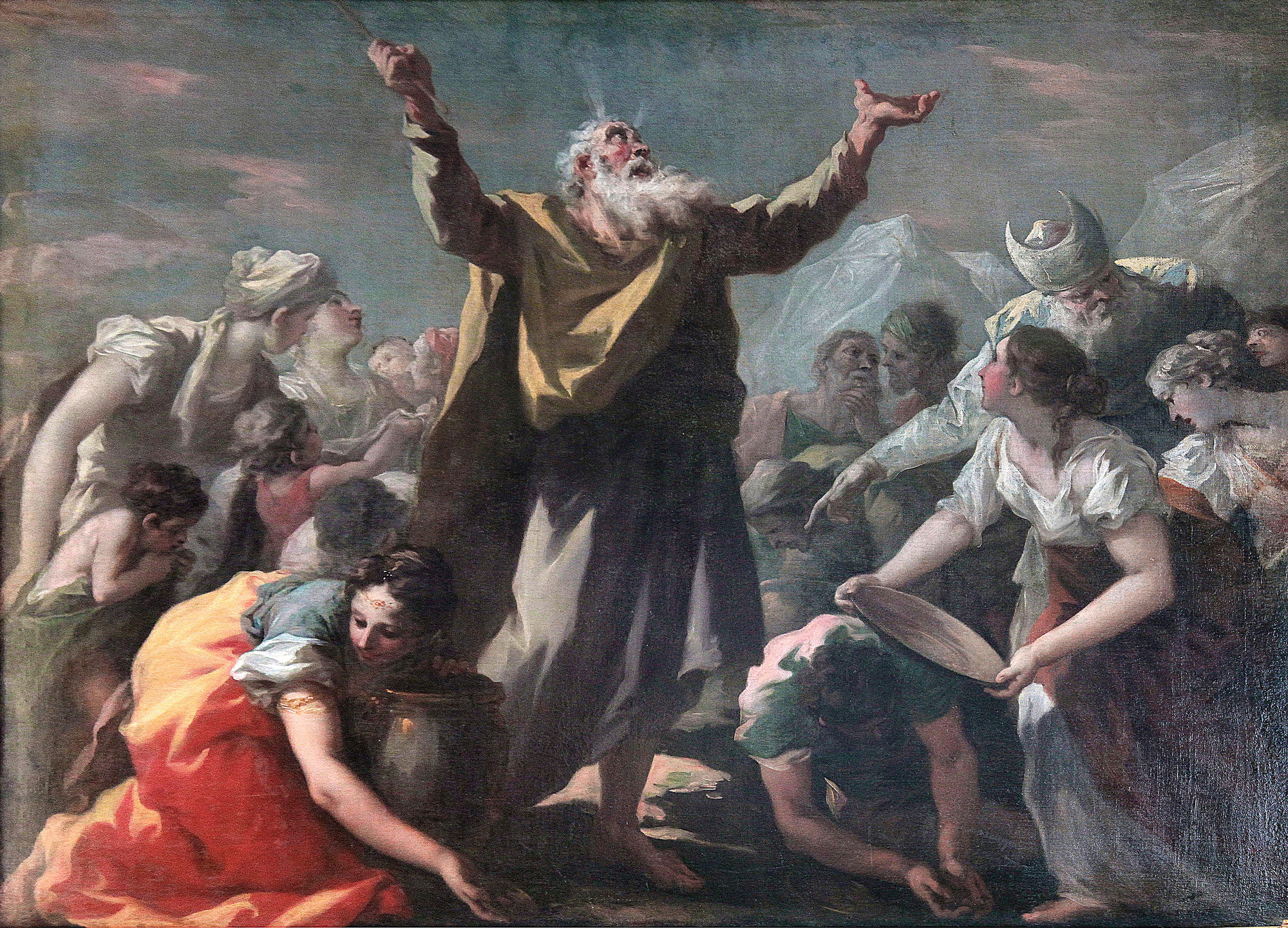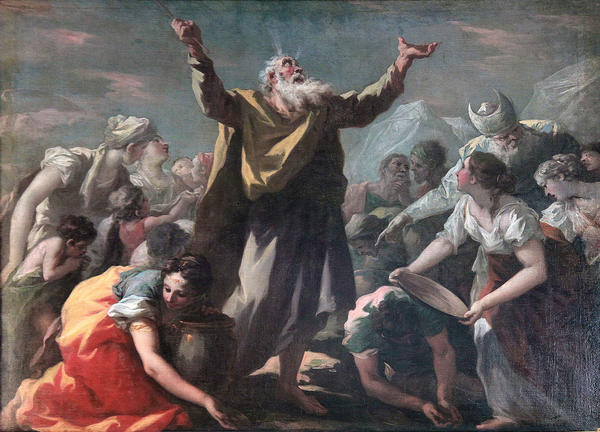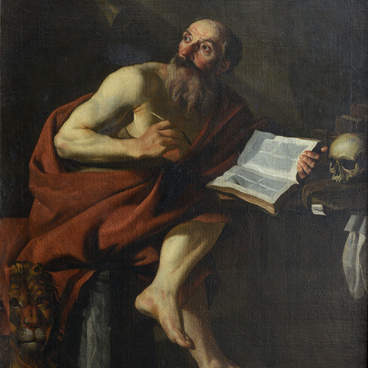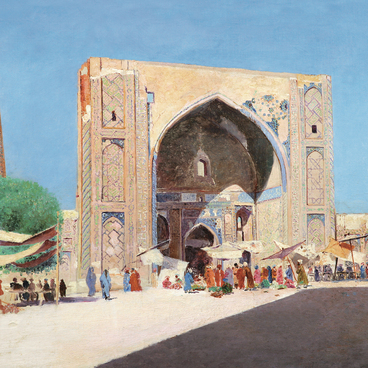During the 66 years of his life, Pellegrini traveled and worked in Italy, Czech Republic, Germany, France and Holland. The decoration of the Golden room in Mauritshuis palace deserves special notice. However, his biggest success was achieved after his trip to England where he decorated the interiors of several castles in Howard, Narfold Hall and Kimbolton. The artist made a contribution into Europe’s cultural history as a successful painter, graphic artist and portraitist.
Pellegrini was a typical representative of the Venetian school and was drawn to epic and religious paintings. Many of his works were monumental in character and size.
However, his personal style similar to rococo can be distinguished. Its distinguishing features are warm colour schemes and soft tones, smooth brush movements and spots hiding vague contours.
All of these elements can be spotted on the Collecting manna painting from the collection of the Serpukhov Museum of History and Art. According to the conclusions of specialists this picture was created for decorating the indoor area of a catholic church.
The painting’s plot is based on an episode from the Bible about Moses leading the consanguine people through the desert to their freedom from slavery. As the region lacked water and food supplies every day except Saturdays manna appeared from the sky in a miraculous way.
It should be clarified that semolina porridge (in Russian – ‘mannaya porridge’) and manna are not identical, although it is said in the Exodus that manna resembled grain. Manna’s taste was different for people of various ages: it was oily for children, bread-like for grown-ups and honey-like for the elder.
In the middle of the composition, Pellegrini depicted the Jewish prophet who was a foster son of the Egyptian pharaoh. His is facing the sky. Around his head beams of light symbolizing holy knowledge can be noticed.
Beside the silver head leader young men and women are putting the food into jars. Manna sent down by the God could stay fresh for a long time.
According to art experts the Collecting manna painting is a mature stage of the art of Giovanni Antonio Pellegrini. Firstly, elegant brush dots can be noticed. Secondly, there are “drifting” smooth tones. In this case from pink tones to green. And thirdly, the painter learned to take into account natural and artificial light at which viewers observed the painting.
Pellegrini was a typical representative of the Venetian school and was drawn to epic and religious paintings. Many of his works were monumental in character and size.
However, his personal style similar to rococo can be distinguished. Its distinguishing features are warm colour schemes and soft tones, smooth brush movements and spots hiding vague contours.
All of these elements can be spotted on the Collecting manna painting from the collection of the Serpukhov Museum of History and Art. According to the conclusions of specialists this picture was created for decorating the indoor area of a catholic church.
The painting’s plot is based on an episode from the Bible about Moses leading the consanguine people through the desert to their freedom from slavery. As the region lacked water and food supplies every day except Saturdays manna appeared from the sky in a miraculous way.
It should be clarified that semolina porridge (in Russian – ‘mannaya porridge’) and manna are not identical, although it is said in the Exodus that manna resembled grain. Manna’s taste was different for people of various ages: it was oily for children, bread-like for grown-ups and honey-like for the elder.
In the middle of the composition, Pellegrini depicted the Jewish prophet who was a foster son of the Egyptian pharaoh. His is facing the sky. Around his head beams of light symbolizing holy knowledge can be noticed.
Beside the silver head leader young men and women are putting the food into jars. Manna sent down by the God could stay fresh for a long time.
According to art experts the Collecting manna painting is a mature stage of the art of Giovanni Antonio Pellegrini. Firstly, elegant brush dots can be noticed. Secondly, there are “drifting” smooth tones. In this case from pink tones to green. And thirdly, the painter learned to take into account natural and artificial light at which viewers observed the painting.



